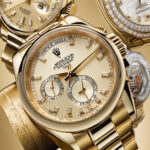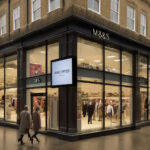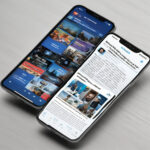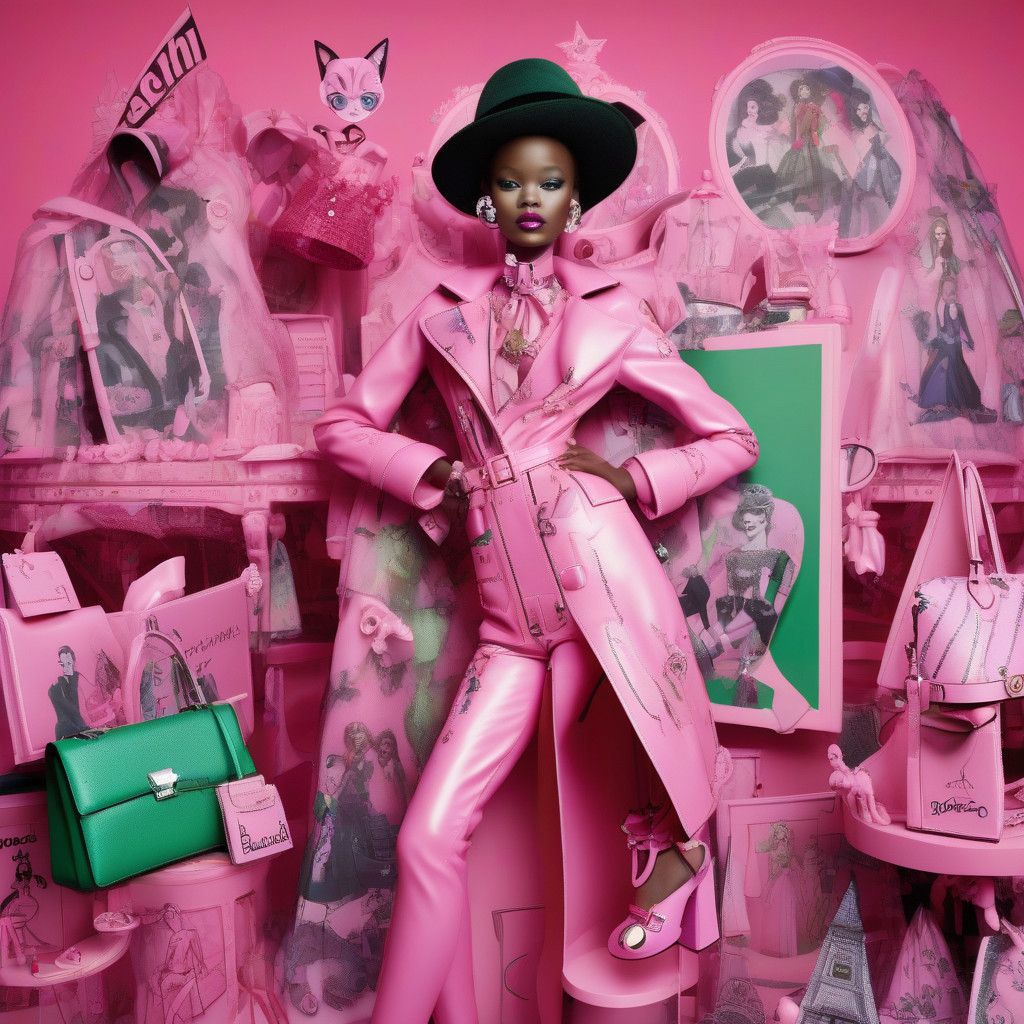The premiere of the much-anticipated film “Wicked” has ignited a marketing frenzy, echoing the success that the “Barbie” movie unleashed last year. Brands across the fashion and beauty sectors are seizing this pop culture moment, rolling out collaborations and collections that capitalize on the film’s vibrant themes and star power.
At the heart of this marketing strategy is Bloomingdale’s, which transformed its iconic holiday windows. This season, they shy away from traditional red and green hues, instead opting for a whimsical combination of pink and green to highlight the “Wicked” theme. The elaborate display featured pink puff skirts, eye-catching chandeliers, and life-sized flowers, all accentuated by dramatic green lighting. The unveiling attracted hundreds of attendees, including Cynthia Erivo, who stars as Elphaba, the Wicked Witch of the West. Kevin Harter, Bloomingdale’s vice president of integrated marketing, remarked on the overwhelming turnout: “Demand was crazy … and this is just the beginning.”
The film’s marketing extends well beyond Bloomingdale’s. A diverse range of brands, from Gap to H&M, have launched “Wicked”-themed products, leveraging the film’s star-studded cast, including Erivo and Ariana Grande. Designer Naeem Khan’s runway show for Spring/Summer 2025 showcased a “Wicked” inspired collection, while Gap’s collaboration with Zac Posen featured Erivo in a hooded gown at the CFDA awards, further intertwining fashion with the film’s promotional efforts.
This surge in fashion collaborations can be traced back to the “Barbie” effect. Mattel’s strategic partnerships in anticipation of the “Barbie” release last year helped boost the film’s box office to over $1 billion and significantly raised brand visibility for participants. Amanda Amar, vice president of global brand strategy at Aldo, explained how “Barbie” changed the landscape for pop culture marketing: “That helped us understand the phenomenon of pop culture moments and the press, excitement, and conversation they stimulate.”
With “Wicked,” brands are attempting to replicate that success, but concerns about market saturation loom large. The collaboration landscape is vast, featuring everything from whimsical “Wicked”-themed jewelry to ornate bomber jackets priced at $2,999. As brands flood the market, the question arises: how receptive are consumers to what could become a repetitive formula for collaborations?
“The significant successes of ‘Barbie’ mean every brand is now trying to follow that blueprint,” stated Karen Fielding, chief strategy officer of creative agency General Idea. The challenge for brands will be to maintain consumer interest without overwhelming them. Striking the right balance becomes crucial in fostering long-term engagement with customers.
In Hollywood, crafting a marketing atmosphere filled with branded merchandise generates buzz and prompts consumers to visit theaters. For fashion brands, this drive for conversation also aids search engine optimization (SEO) efforts. As Mark Breitbard, CEO of Gap, put it: “Wicked feels like an event. We want to move at the speed of culture and at the speed of our consumer.”
The synthesis of culture and commerce is evident across collaborations. For instance, Forever 21’s collection features unique pieces such as sequined green and pink jersey dresses and luxuriously layered tulle gowns. Each item is crafted to resonate with both whole-hearted fans and new customers who may explore the brand because of the film.
Meanwhile, retailers like Vera Bradley hope to rekindle past successes tied to “Wicked.” Their recent collection targets the demographic of nostalgic shoppers who were active when the Broadway show first gained popularity, something potentially transformative for the brand.
As brands continue to harness the cultural phenomenon surrounding “Wicked,” the potential for extending reach and increasing store traffic is significant. And while launching multiple collaborations can be a gamble, many firms are embracing the lack of exclusivity as a means to amplify their storytelling.
Masako Konishi, head of merchandising at Forever 21, noted, “The more brands collaborate with Wicked, the more the story gets out there.” This sentiment demonstrates an understanding that collaborative marketing can enhance brand narrative and relevance.
Despite the potential pitfalls associated with over-saturation, the sheer popularity of “Wicked” opens doors for brands to connect meaningfully with consumers. As the holiday shopping season approaches, effective campaigns built on cultural significance are more important than ever. By offering special experiences, such as exclusive previews and themed products, businesses can create excitement around their offerings.
In conclusion, the collaborative ventures inspired by “Wicked” present an exciting opportunity for brands to cement their presence within the fashion landscape. As this phenomenon unfolds, both the strategy and execution will be critical in determining the lasting impact on consumers and the marketplace.












